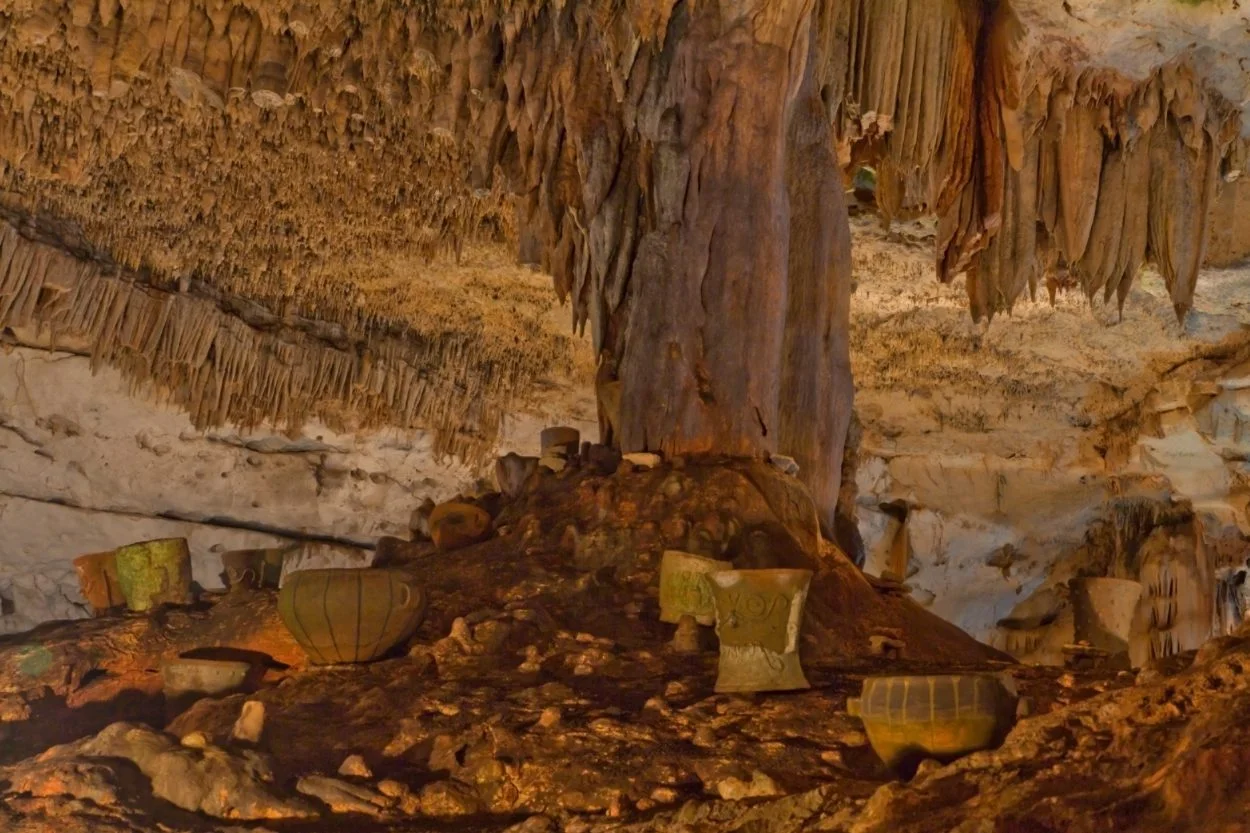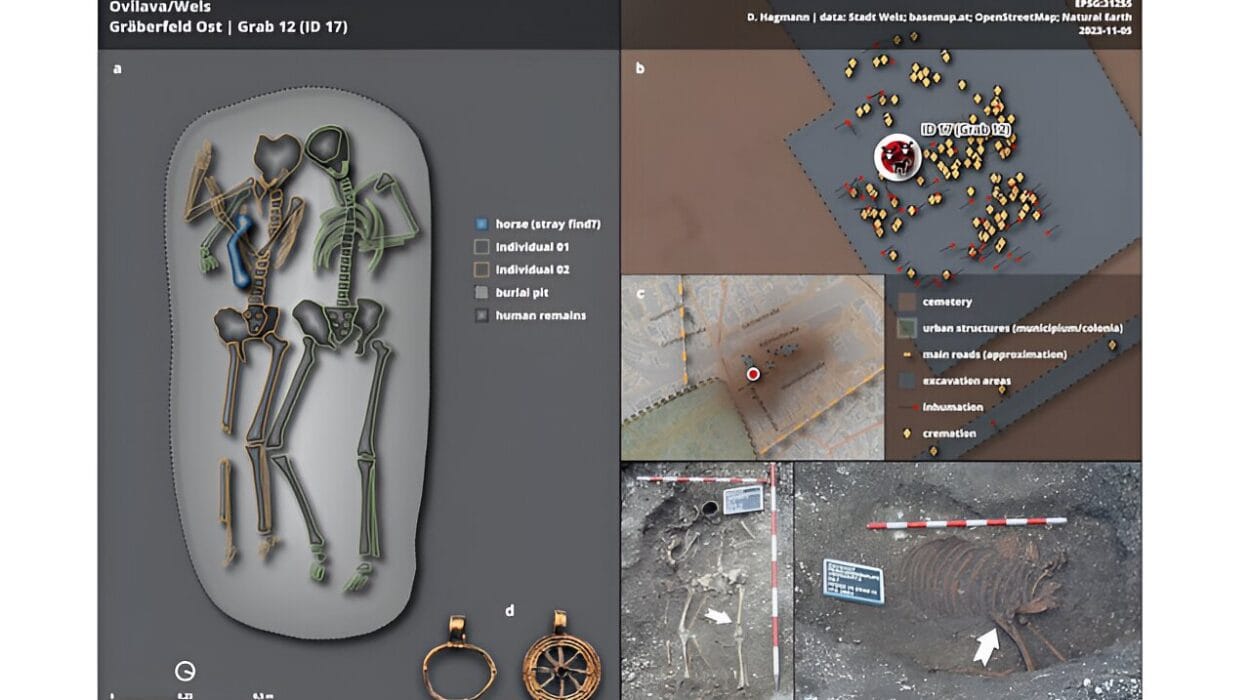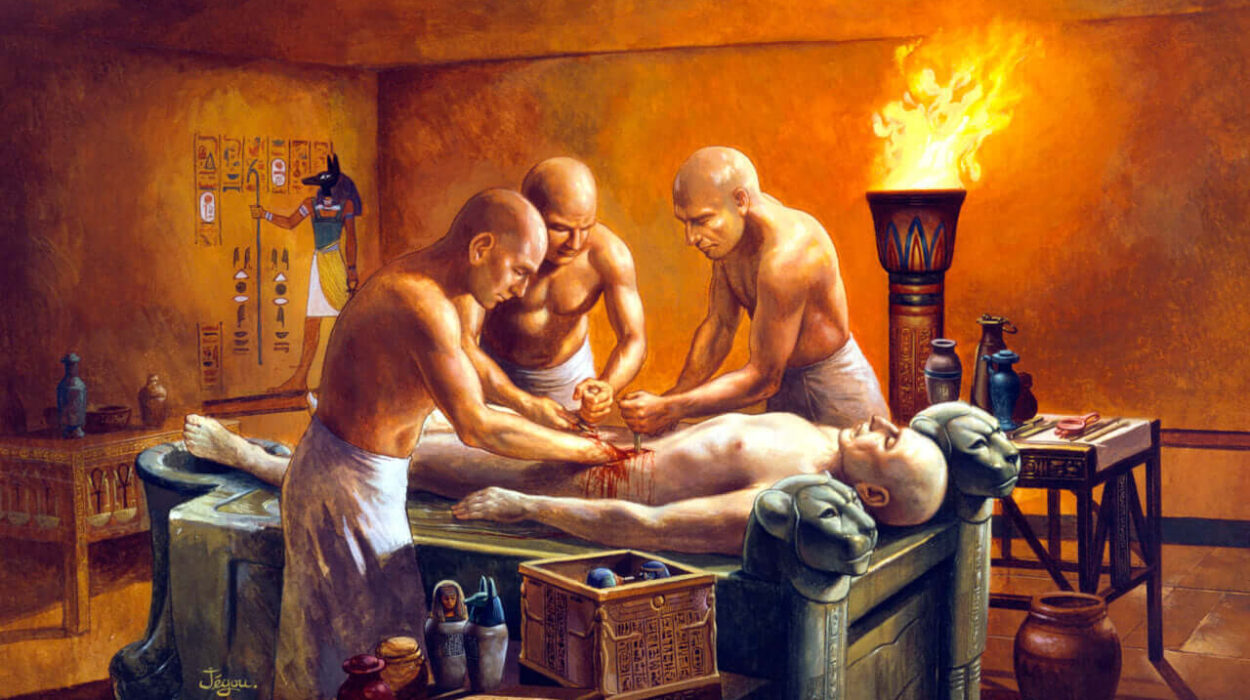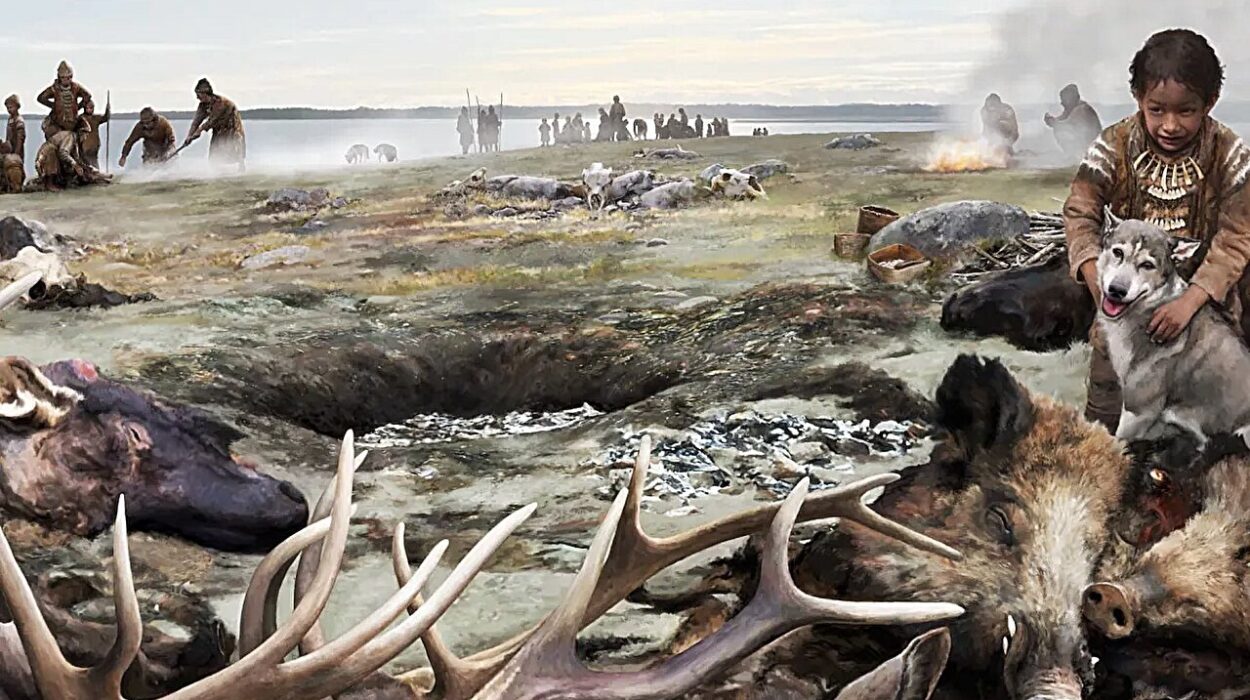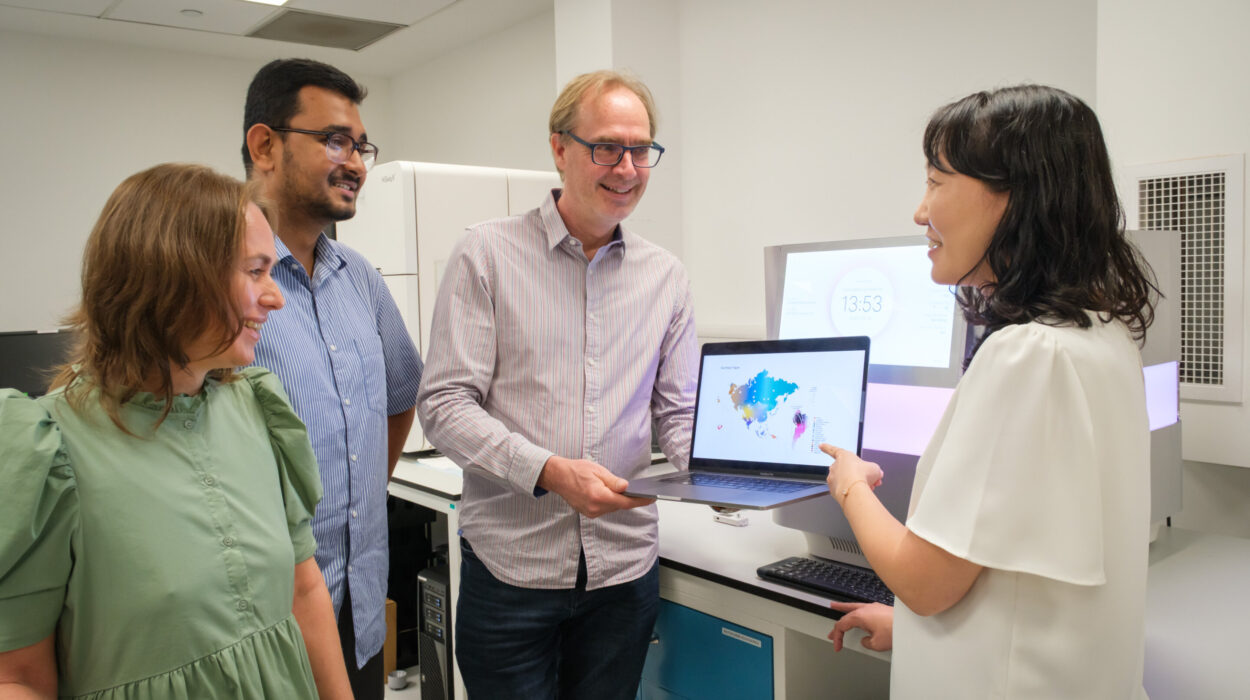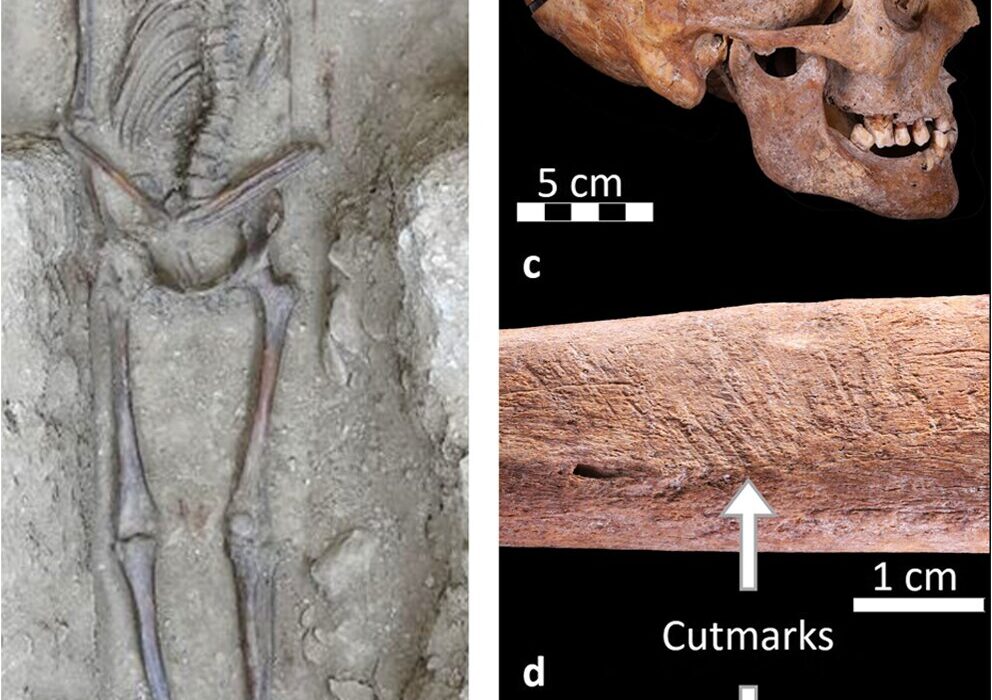Deep in the limestone landscapes of Mesoamerica, where rivers disappear into the earth and stalactites hang like ancient teeth, the Maya found sacred gateways to the divine. To them, caves were not simply hollow places carved by water and time. They were living portals, the very mouths of the earth, where the breath of the gods could be felt in the cool, damp air. In the worldview of the Maya, these caves were thresholds—places where the human world and the supernatural realm converged.
Standing inside such a cave today, one can still sense the weight of reverence. The darkness seems thicker, almost alive, and the drip of water echoes like a heartbeat. For the ancient Maya, entering these subterranean spaces was not just a physical act but a spiritual journey. They were stepping into the cosmic underworld known as Xibalba, a domain ruled by powerful deities and spirits. In these caverns, rituals unfolded, offerings were made, and life itself was negotiated with the unseen forces that shaped existence.
The Maya Vision of the Cosmos
To understand why caves held such sacred significance, we must first step into the Maya conception of the universe. The Maya imagined a multilayered cosmos. Above lay the heavens, a realm of stars, gods, and ancestors. The earthly plane formed the middle world, where humans lived, planted crops, raised families, and built their cities. Beneath this terrestrial surface stretched the underworld—Xibalba—a place both feared and revered.
Unlike the notion of a purely evil underworld found in other cultures, the Maya underworld was not simply a place of death. It was a realm of fertility, rebirth, and transformation. Water, the giver of life, flowed from it. Seeds germinated in its dark soil. Rain clouds were believed to emerge from its watery caverns. To the Maya, caves were not symbols of death alone but sources of renewal, tied to the cycles of agriculture, survival, and cosmic balance.
In this vision, caves were not metaphorical entrances to Xibalba—they were literal ones. The earth opened itself to reveal doorways, and within those doorways, the divine was near.
Caves as Wombs of the Earth
Archaeologists and anthropologists often describe Maya caves as symbolic wombs. Their rounded chambers, hidden depths, and flowing waters made them perfect metaphors for birth and regeneration. In Maya mythology, the first humans emerged from sacred places in the earth, often caves or mountains, guided by ancestral spirits.
This association with birth gave caves profound importance in rituals of fertility. Offerings of maize, cacao, and even human blood were placed in cave chambers to encourage bountiful harvests and ensure the continuation of life. To the Maya, planting a seed in the soil and leaving an offering in a cave were parallel acts—both were forms of nurturing the earth to bring forth abundance.
The connection between caves and fertility extended beyond agriculture. Women may have visited these sites to seek blessings for childbirth, and leaders performed rituals inside to ensure the prosperity of their people. In every way, caves were seen as sacred mothers—keepers of mystery, sustenance, and renewal.
Ritual Pathways into Darkness
Archaeological evidence reveals that caves were active sites of ritual for centuries. Ceremonies conducted inside these darkened chambers often involved elaborate offerings. Pottery vessels, intricately painted with glyphs and images, were smashed against cave floors as symbolic acts of release. Jade, obsidian blades, shells, and beads were left behind, glittering in torchlight as gifts to the gods.
But offerings were not limited to objects. The Maya also engaged in bloodletting rituals within caves, piercing tongues, ears, or skin to let their life-force flow into the earth. In some cases, skeletal remains reveal the chilling evidence of human sacrifice. Individuals—often children—were given to the underworld deities, their lives offered to ensure rain, fertility, or cosmic harmony.
Caves like Naj Tunich in Guatemala or Actun Tunichil Muknal in Belize preserve haunting evidence of these ceremonies. In Actun Tunichil Muknal, the so-called “Crystal Maiden” lies preserved, her skeleton calcified by centuries of mineral-rich drips, her body frozen as a perpetual offering to the gods. To stand in that cavern today is to witness the intersection of devotion and mortality, the depth of human faith carved into stone and bone.
The Sacred Waters
Water was a central element in Maya cave rituals. Many caves house underground rivers and cenotes, natural sinkholes that plunge into aquifers. For the Maya, these watery depths were nothing less than entrances to the divine. They believed that rain gods, such as Chaac, dwelled in these subterranean pools, releasing the rains that nourished maize fields and sustained life.
Pilgrimages to watery caves often involved the offering of ceramics, incense, and food. In some instances, entire canoes laden with gifts were sunk into cenotes as acts of devotion. Archaeologists have found jade beads, gold ornaments, and human remains within these watery tombs. The offerings were not lost—they were delivered. For the Maya, the water was a medium of communication, carrying their prayers into the underworld.
In times of drought, these rituals took on even greater urgency. To enter a cave was to approach the very source of rain itself, to plead directly with the gods who controlled the sky. The desperation of farmers, the anxiety of rulers, and the hopes of entire communities flowed into these subterranean rites.
Caves and Maya Kingship
Caves were not only sites of communal ritual—they were also intimately tied to political power. Maya kings often drew their legitimacy from their ability to mediate between worlds. By performing cave ceremonies, rulers demonstrated their role as cosmic intermediaries, capable of communing with gods and ancestors on behalf of their people.
Inscriptions and murals depict rulers entering caves or being associated with mountain-cave imagery, reinforcing their connection to sacred geography. By aligning themselves with these powerful sites, kings wove their authority into the fabric of the cosmos. A king who could control the rains or ensure agricultural fertility through cave rituals was more than a leader—he was a bridge between humanity and divinity.
The Darkness as Transformation
Entering a cave was not a casual act. The darkness itself was transformative, stripping away the familiarity of the surface world. Torches flickered against stone, shadows danced, and the sound of dripping water created a rhythm of otherworldliness. For participants, the sensory disorientation may have heightened the spiritual intensity of rituals, making them feel as though they had truly crossed into another realm.
Psychologists and anthropologists suggest that such environments could induce altered states of consciousness. Combined with fasting, chanting, or the use of hallucinogenic substances, the cave’s atmosphere may have carried ritual participants into visionary experiences. In these altered states, they believed they could speak with ancestors, encounter gods, or glimpse the cosmic forces shaping their world.
Thus, caves were not passive locations but active agents in transformation. They swallowed the participants, disoriented them, and then returned them to the surface changed, renewed, or spiritually charged.
Archaeological Windows into the Past
The study of Maya caves has revolutionized archaeology in the region. For much of the 20th century, scholars focused on the grand cities—Tikal, Palenque, Copán—where towering temples and ornate palaces stood as symbols of Maya achievement. But beneath these surface monuments lay a deeper layer of sacred practice.
Excavations in caves have uncovered thousands of artifacts, from pottery shards to human remains. Stalactites deliberately broken and arranged suggest ritual manipulation of the cave itself. Charcoal traces from torches reveal pathways walked by ancient pilgrims. The evidence paints a vivid picture of how caves were woven into daily and ceremonial life.
One of the most striking findings is the sheer consistency of cave use across centuries. Even as cities rose and fell, as dynasties shifted and wars were fought, the caves remained sacred. They were timeless sanctuaries, immune to political change, grounding the Maya in a continuity that stretched beyond history.
Myth and Memory
Maya mythology is rich with references to caves. The Popol Vuh, the sacred narrative of the K’iche’ Maya, tells of hero twins who journeyed into Xibalba to face trials and tests. These stories mirror the real journeys of priests and pilgrims who entered caves, seeking to navigate danger and emerge transformed.
Caves were also remembered in lineage stories, linking families to sacred places of origin. Entire communities traced their identity to a cave, viewing it as the womb from which their ancestors had first emerged. In this way, caves were not just geological formations—they were storied landscapes, repositories of memory and myth.
Living Traditions
The sacredness of caves did not vanish with the collapse of the Classic Maya cities. In many Maya communities today, caves remain places of prayer and ritual. Shamans and spiritual leaders still enter them to burn incense, offer candles, and speak with ancestral spirits. The continuity of this tradition underscores the enduring power of these places.
Even as tourism and modernity press upon these landscapes, caves retain their aura. Guides who lead visitors into them often recount both archaeological facts and local legends, blending science with story. The caves still breathe with reverence, reminding us that they are not relics of a vanished civilization but active participants in living culture.
The Sacred Caves in Modern Reflection
To stand at the entrance of a Maya cave today is to feel the weight of time pressing in from both directions. Behind us lies the legacy of ancient ceremonies, of kings and farmers, of bones calcified into crystal. Ahead of us lies the challenge of preserving these places in a modern world where development and looting threaten their integrity.
They remind us of the human impulse to seek meaning in the earth itself, to find sanctity in stone and shadow. They are testaments to how deeply the Maya understood the interconnectedness of life, death, fertility, and renewal. And they remind us that the sacred is often hidden not in the heights of the sky but in the depths of the earth.
Conclusion: The Eternal Mouths of the Earth
The sacred caves of the Maya are more than archaeological sites. They are living metaphors for humanity’s relationship with the unknown. They are wombs, tombs, temples, and thresholds all at once. They invite us into darkness not to frighten us but to teach us—to remind us that life springs from hidden places, that renewal follows death, and that the earth itself is alive with spirit.
For the Maya, these caves were never mere hollows in the rock. They were the mouths of the world, speaking the language of gods and ancestors. To enter them was to step into the heart of existence, to participate in the eternal dance of life, death, and rebirth. Even now, as the drip of water continues and the stalactites grow imperceptibly, the caves keep their vigil—guardians of a sacred truth that resonates across time.
